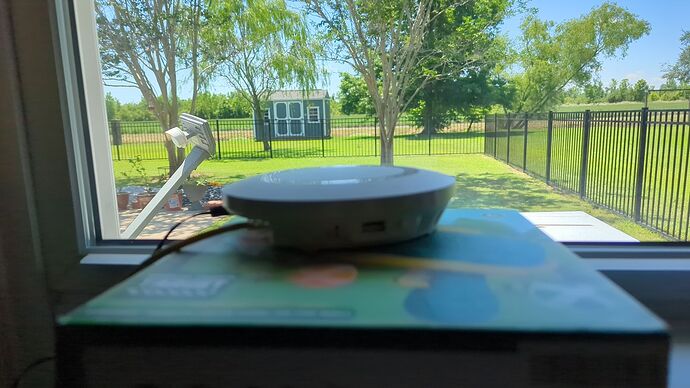First of all, consider 'a wire', you will prefer it. For outdoor cabling, fibre connections are strongly preferred, as they are lightning safe (no conductor inside, so not accidentally acting as lightning rod, nor endangering your devices on either end).
Apart from that, questions like these are incredibly hard to answer (apart from going full enterprise mode and 'wireless wire' kind of dedicated directional devices). The first step would be chugging your existing router/ AP to the nearest window (but remaining inside) facing your shed - and then checking with (e.g.) your phone how far you can get (and at what speed/ packet loss/ latency), both directly outside and inside of your shed. If that works reasonably well, great - you know your answer, meaning a (good) 'regular' repeater (4addr) might do. If you have to keep both the router and your phone outside, you also know your answer, meaning you would need to go enterprise, with outdoor rugged 'wireless wire' types of directional devices (and another AP inside the shed).
30m distance with 'normal consumer devices' and their omnidirectional antennas kind works in clear line of sight, but it's pretty much on the edge. If you add walls to the mix (for your indoor type devices), it's probably beyond that (which doesn't mean that you totally can't 'see' the BSSID, but it probably will no longer meet basic expectations). For dedicated/ directional outdoor devices, this isn't much of an issue, but you still need to keep the fresnel zone clear (no trees or bushes), you'd need to get your copper cable (data and power, PoE respectively) to the outside of your wall(s) (grounding and lightning strike protection required). These 'wireless wire' kind of devices are dedicated to this purpose, so you'd still need your normal router inside the house, and a normal AP inside the shed to cover the devices over there, in other words it's not necessarily cheap (two normal consumer devices, two higher priced special purpose devices).
[Insert something about the legal implications of outdoor uses, the allowed frequencies, DFS and maximum transmit power here; it's possible, but you need to be actively aware that stricter rules apply here, especially on 5/ 6 GHz, meet them]
…and then take another look at fibre optic cables, yes you will need to pay someone to splice it up for you (a 15-20 minute job, if you laid the speedpipe/ fibre to both ends yourself), but the cable itself is cheap and inert, it doesn't need too much care, just lay the speedpipe and you're done. Full speed guaranteed.
This device is supported rather well by OpenWrt, so give it a try.



